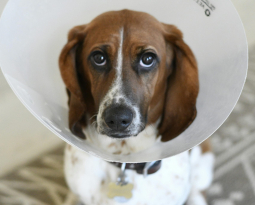Pet homelessness is an unfortunate but very real problem in which millions of healthy dogs and cats are euthanized because there aren’t enough homes for them. To combat this problem, it is imperative that pet owners spay and neuter their furry friends, and there are more benefits than just population control. Here at Acoma Animal Clinic we always try to provide you with the info to keep your dogs and cats healthy, and when it comes to spaying and neuter it’s no exception.
Spayed and Neutered Pets Live Longer
- Spaying helps to prevent numerous illnesses that can decrease the life expectancy of your pet. Uterine infections, breast tumors, and others can be prevented by spaying your pet before they go through heat the first time. In males, neutering prevents testicular cancer and certain prostate troubles.
Behavioral Benefits of Spay and Neutering
- Pets gain several behavioral benefits from undergoing the surgery. Female pets won’t go into heat, eliminating the yowls or frequent urination in cats. Male dogs are less likely to try and run away from home and may be less aggressive when neutered early.
All that said, spaying and neutering is not an immediate, perfect fix for all behavior issues. While it can reduce those caused by higher testosterone levels, it is not a guarantee. If these behaviors are habitual it will take more training to fix them as neutering changes are dependent on individual animal’s personality and history.
When to Spay/Neuter?
When to spay or neuter your pets differs based on some factors. For dogs, it is recommended between six and nine months. They can undergo the surgery younger, as young as eight weeks, so long as they are healthy. And of course, they can be altered past nine months as adults, but with age (or obesity or other health issues) comes possible complications.
For cats, it is usually safe for kittens eight weeks and older to be altered, usually before five months old is the preferred time frame. Despite what you may have heard, it is possible to spay a female feline while they are in heat.
Post-Surgery Tips
Following your pet’s alteration, the vet will provide you with the necessary info on how to care for your pet during the recovery. Generally, here are a few tips for the process:
- Provide a safe, quiet pace for your pet to rest and recuperate. Away from other animals, or children who might not know better, your furry friend needs to rest.
- During the two weeks following surgery, do your best to prevent your pet from running or jumping, or otherwise being too active or agitating their incision site and disrupting the healing process.
- Hold off on bathing your pet for 10 days at the minimum following surgery.
- Pay regular attention to the incision site to make certain of the healing.
- Call your vet with any concerns
Request an appointment today and get your furry family member the care they need, whatever it might be!





